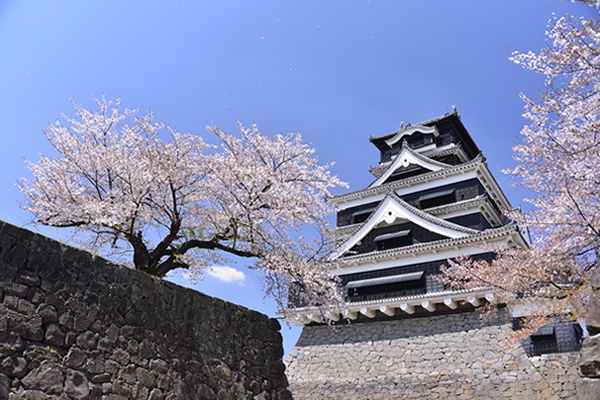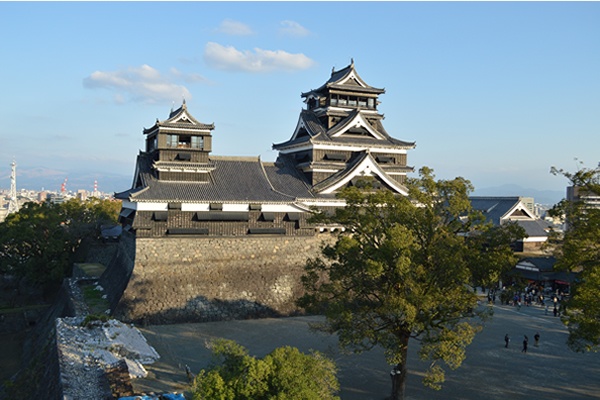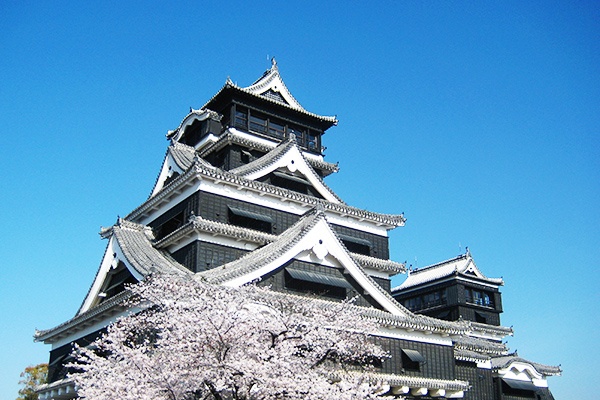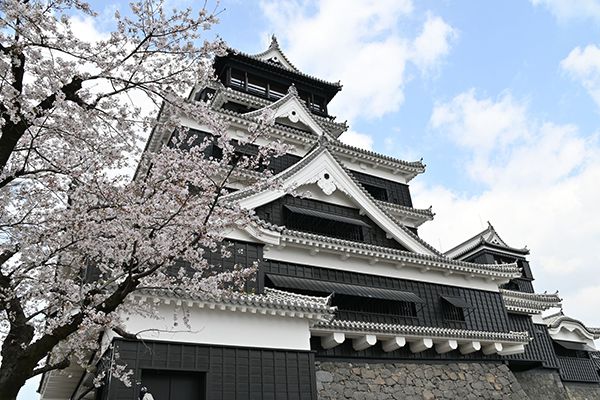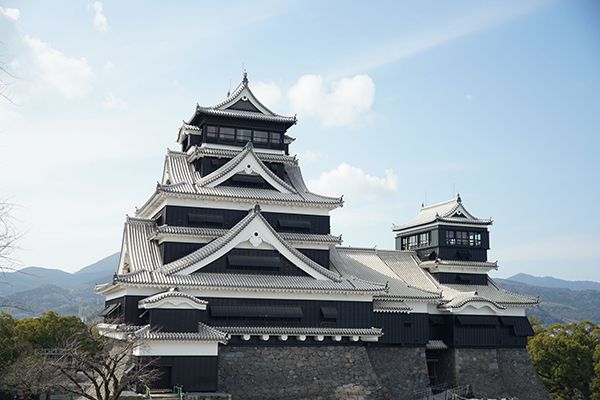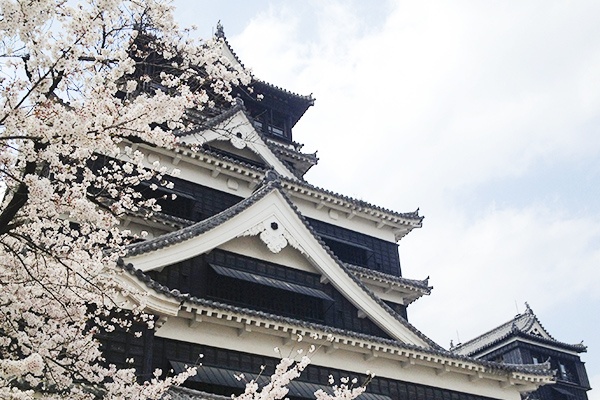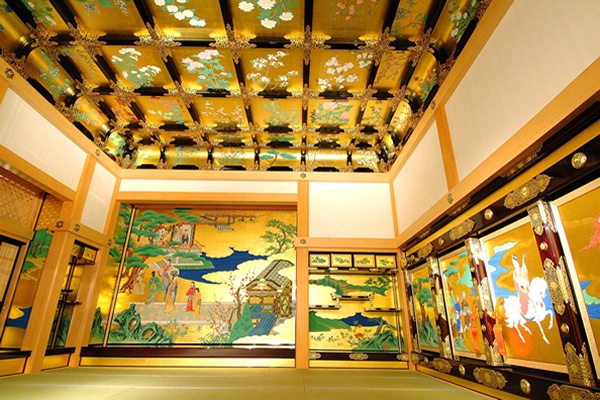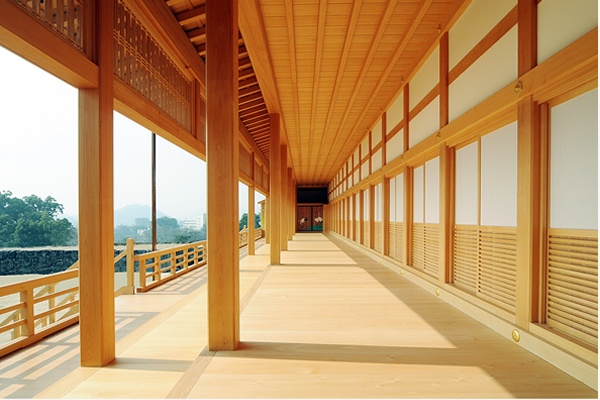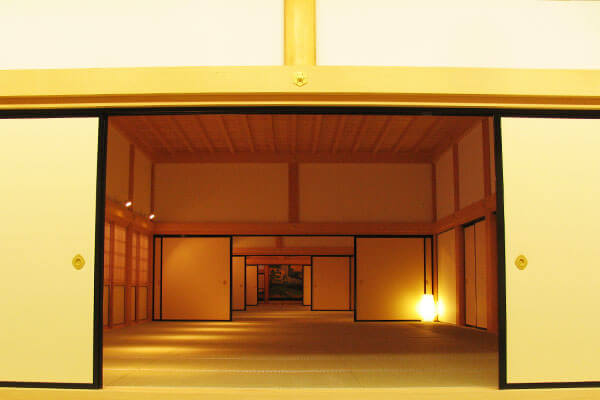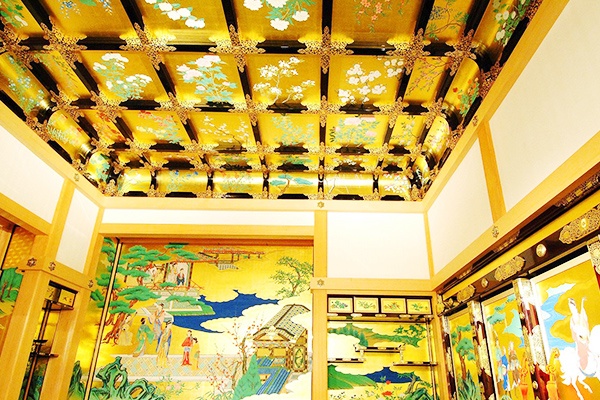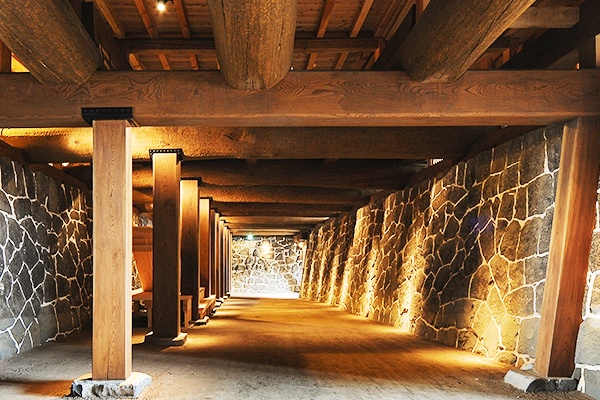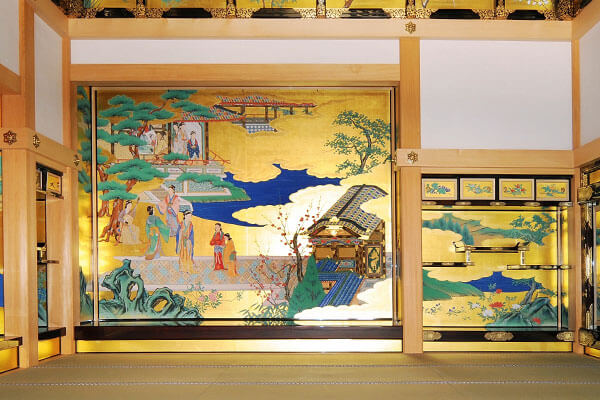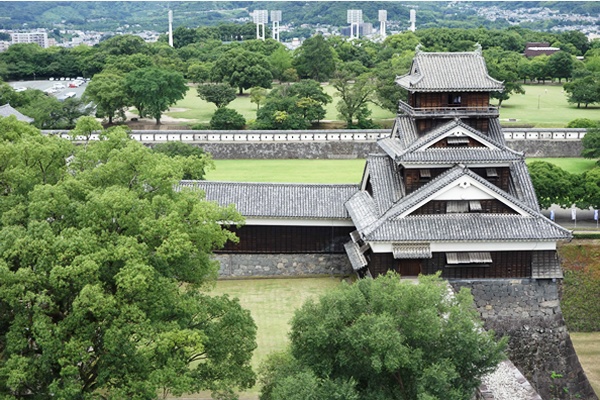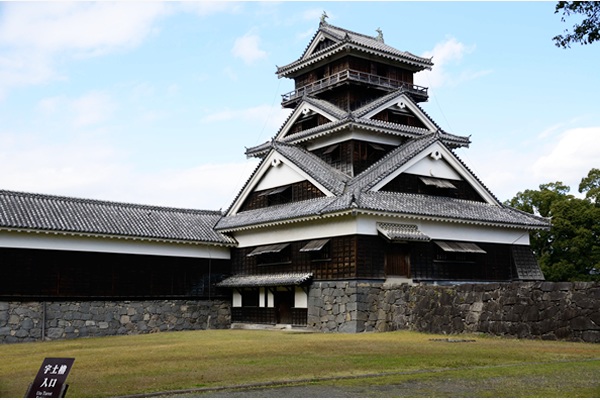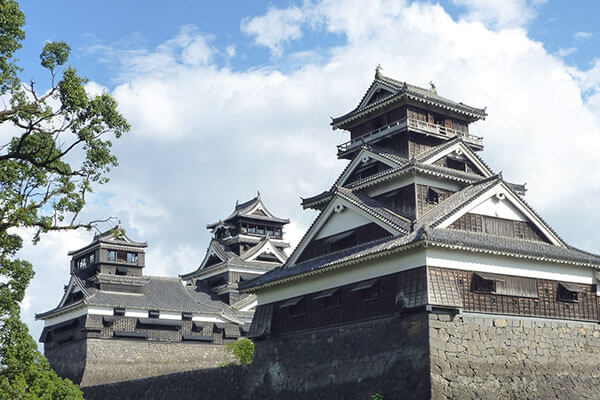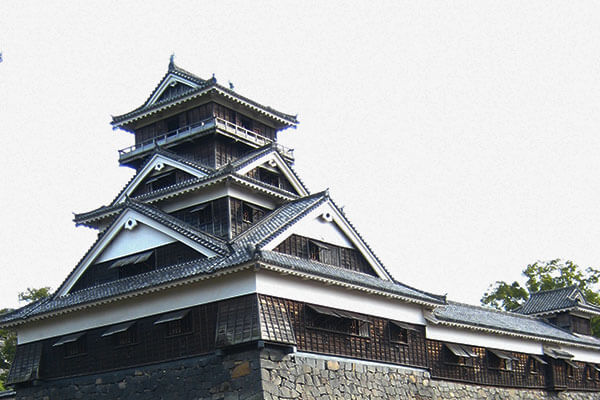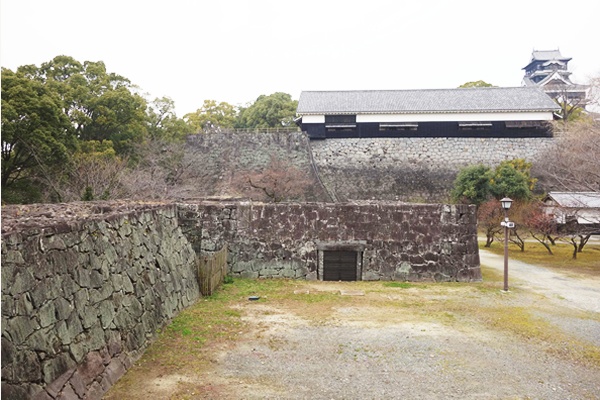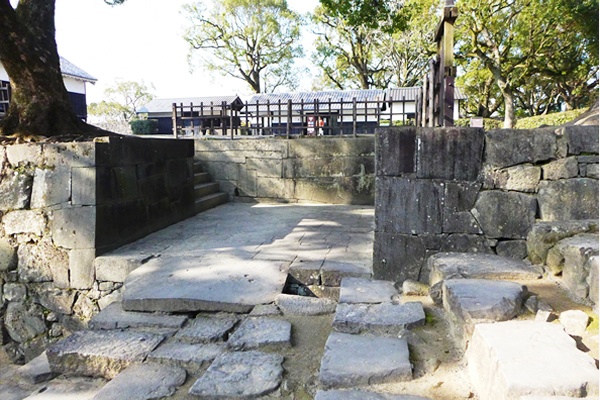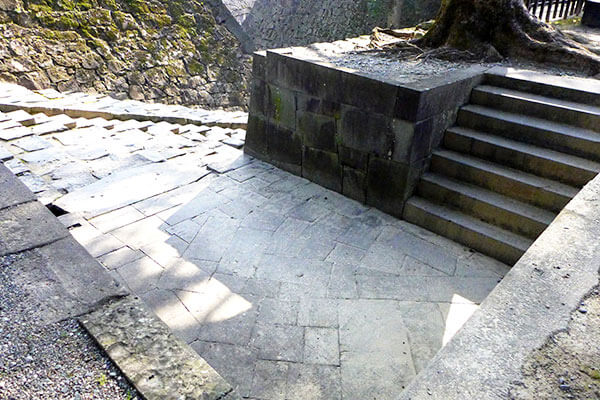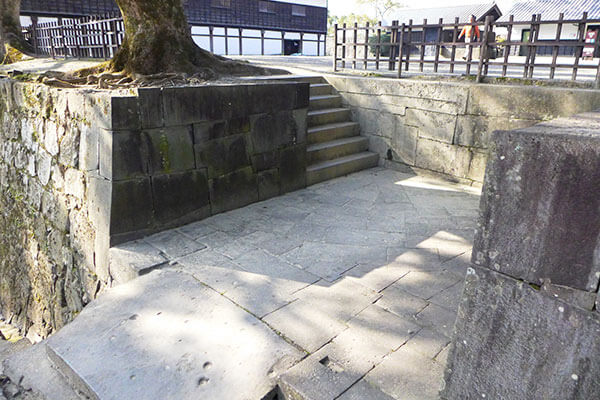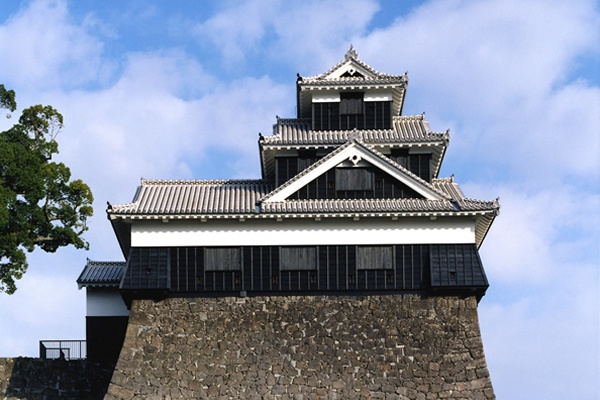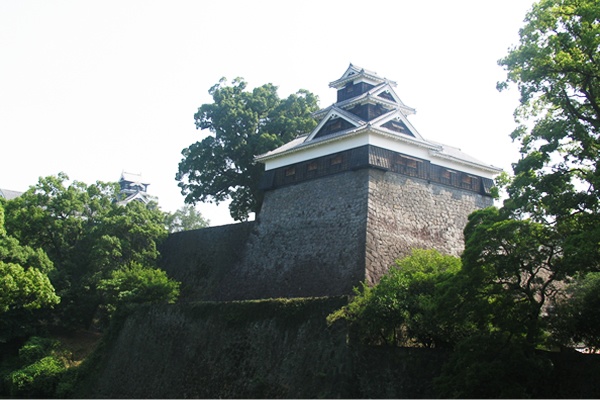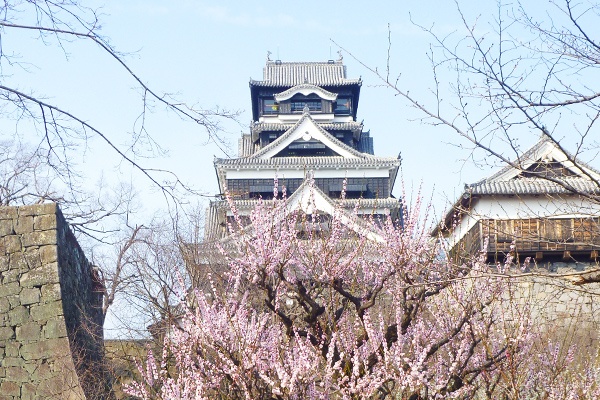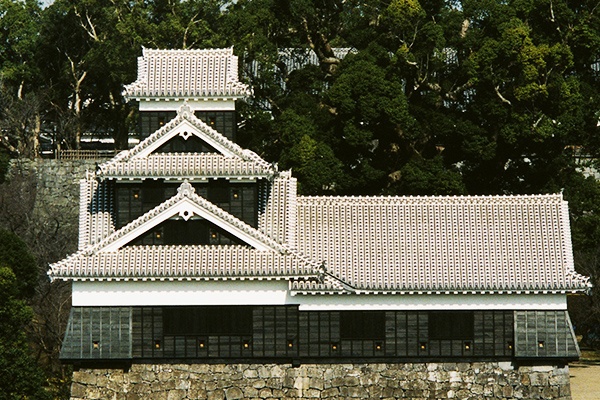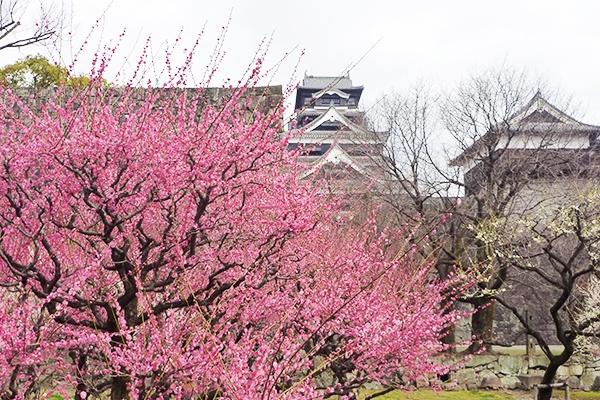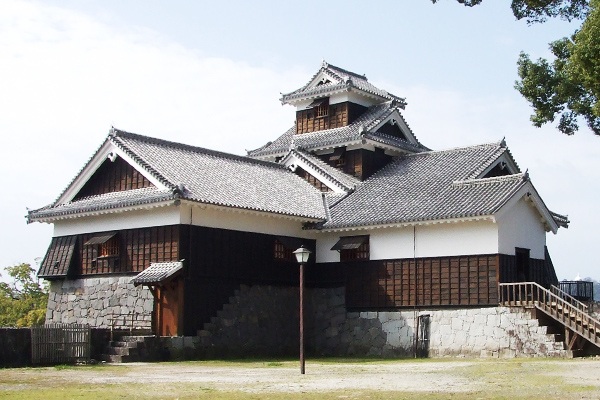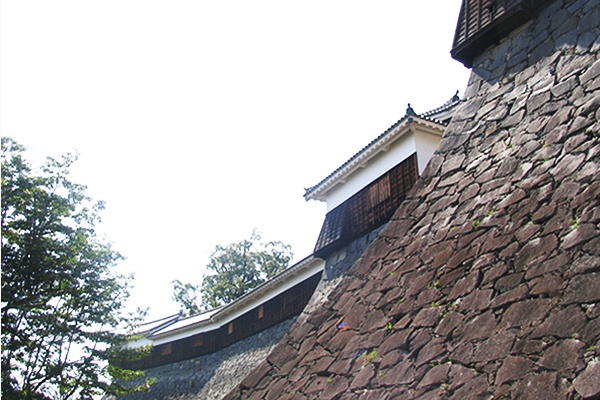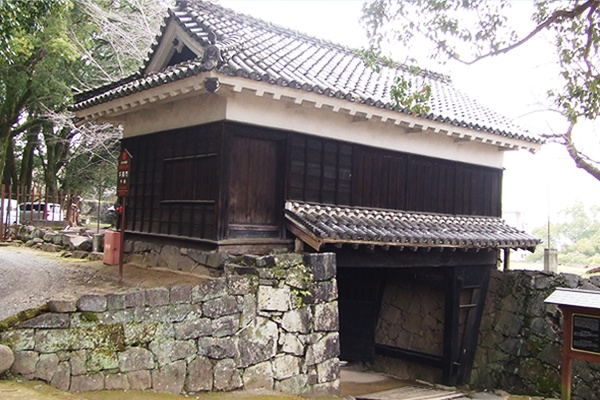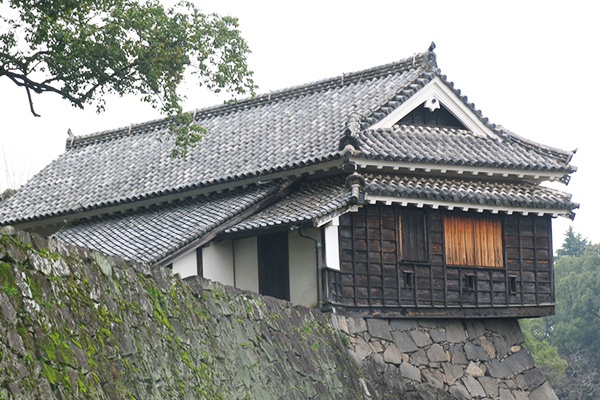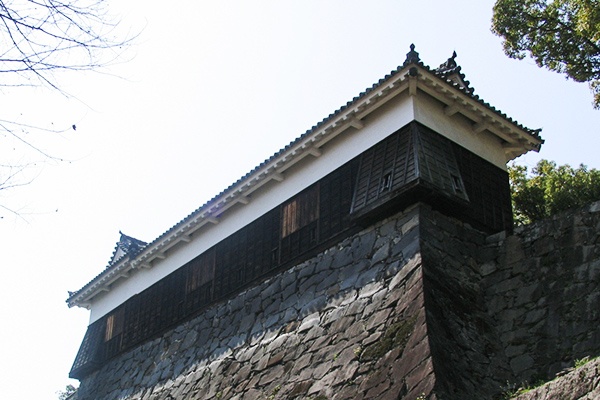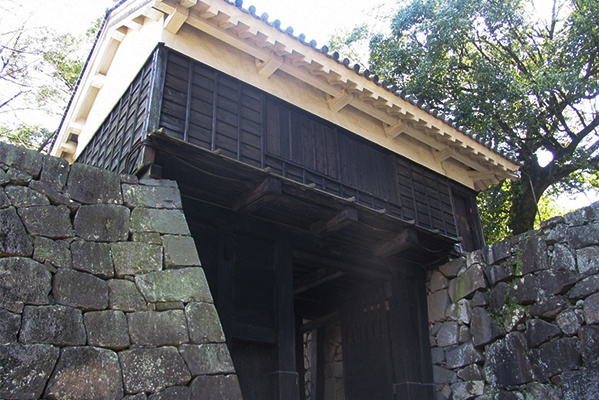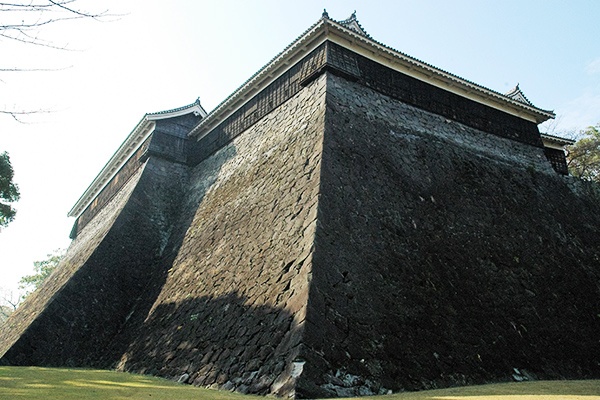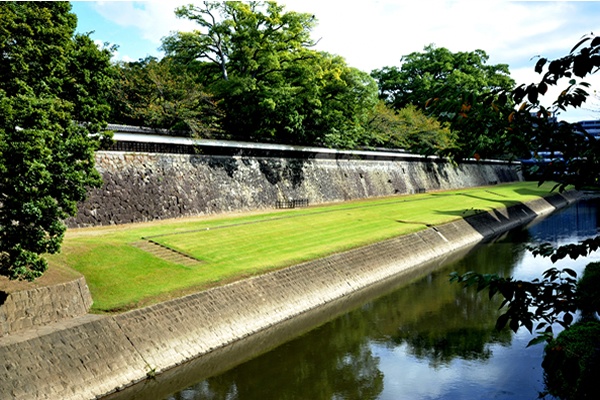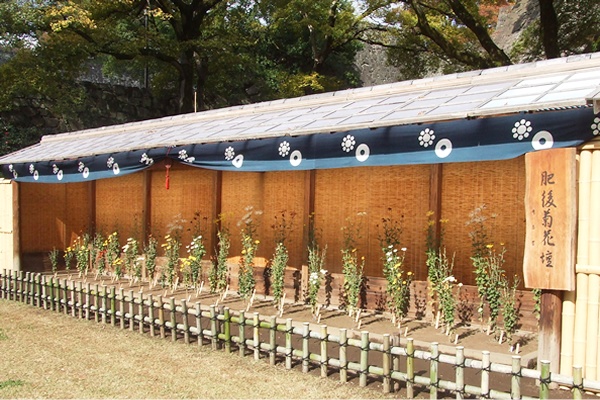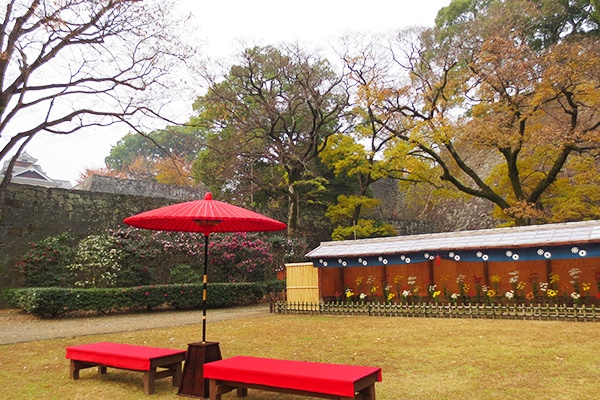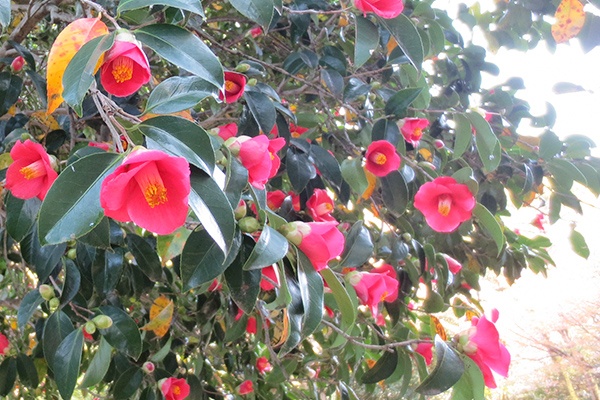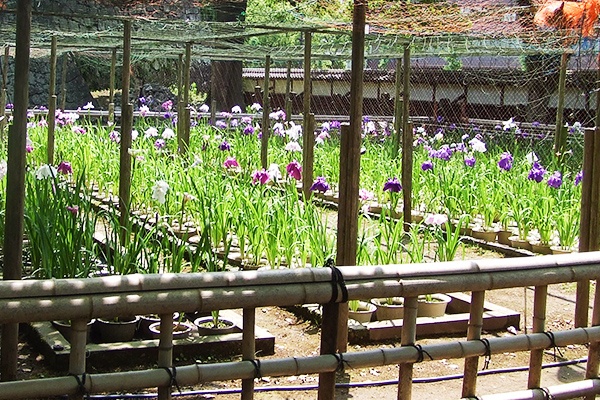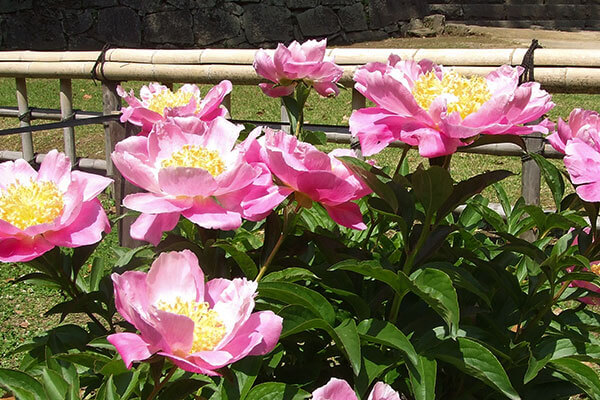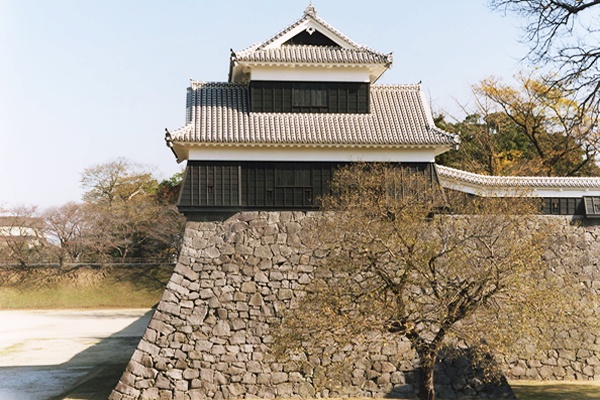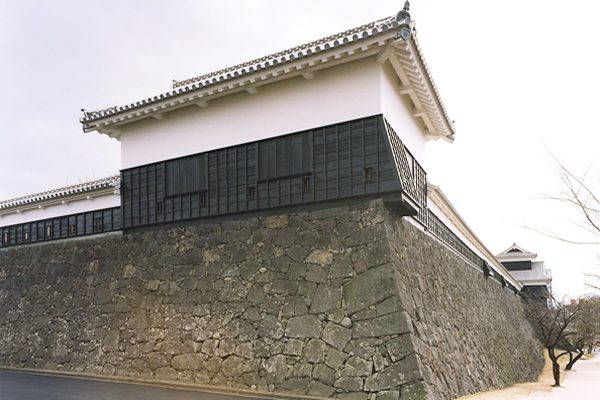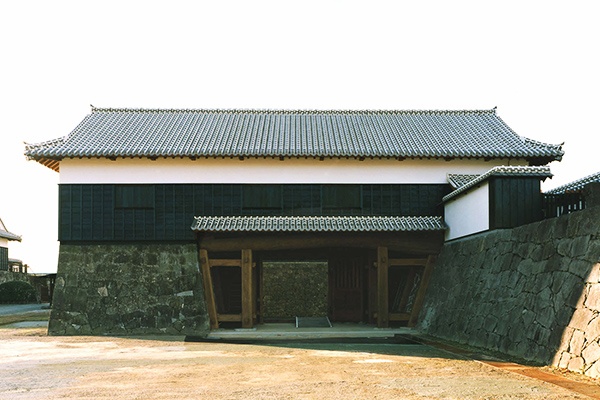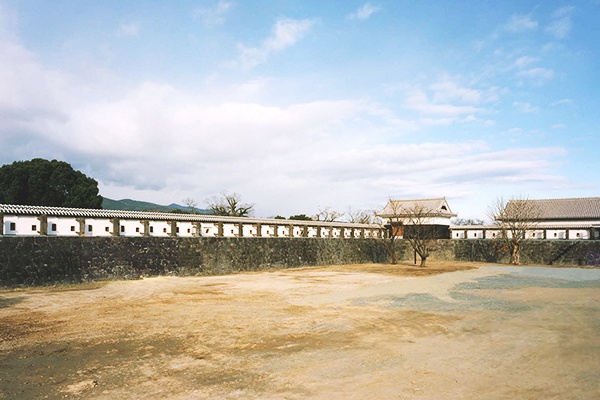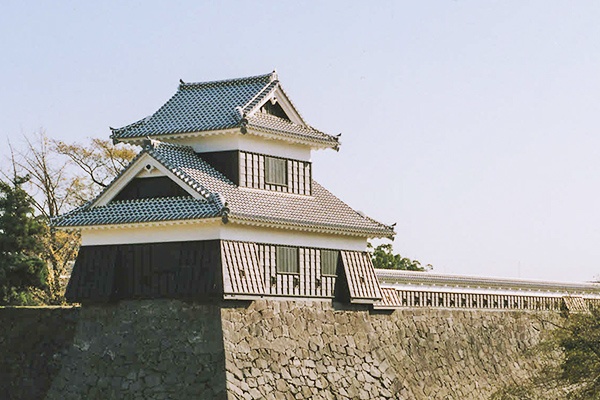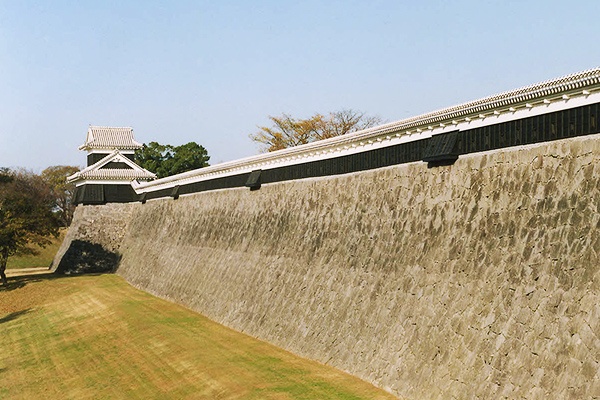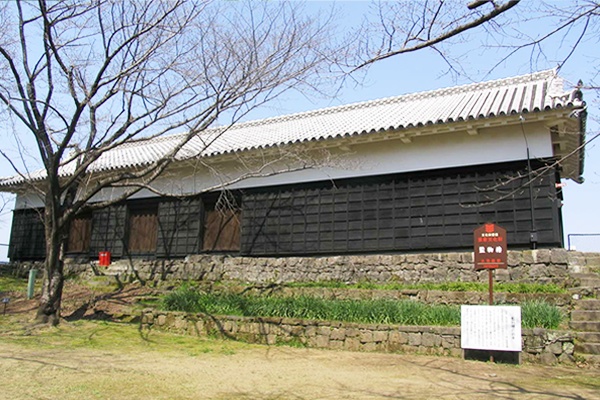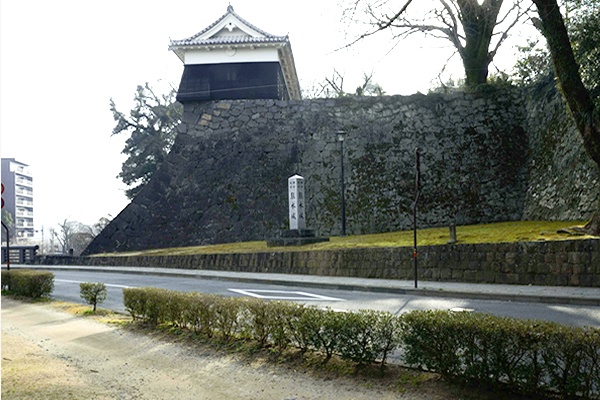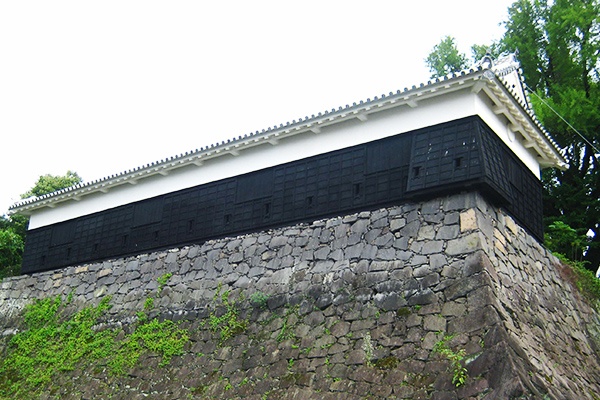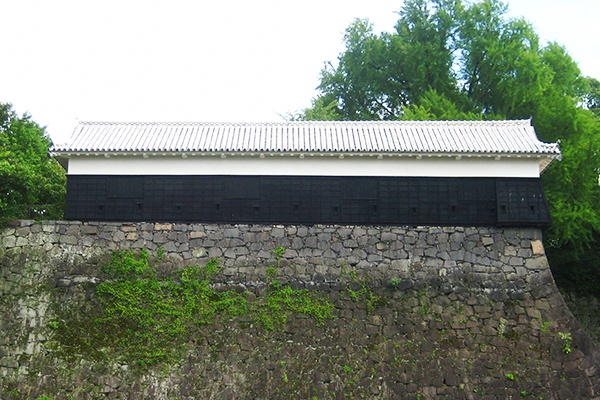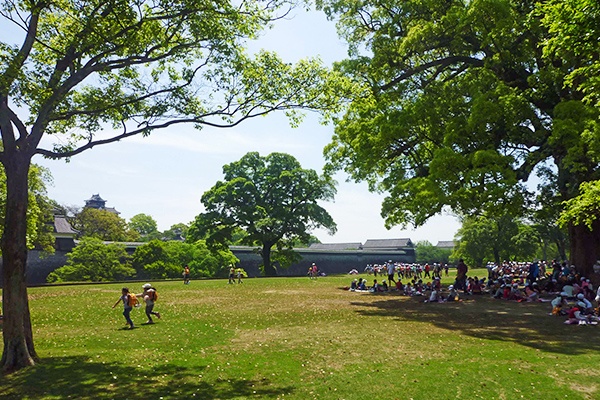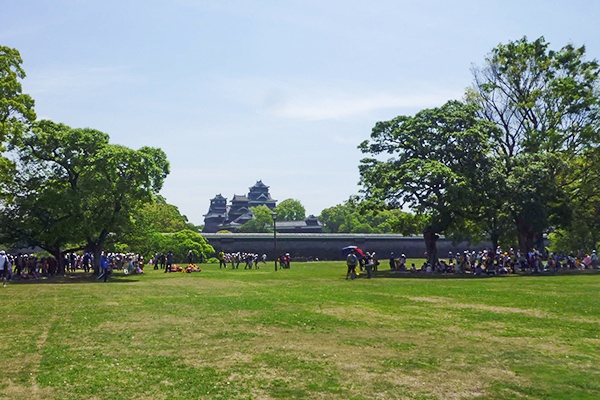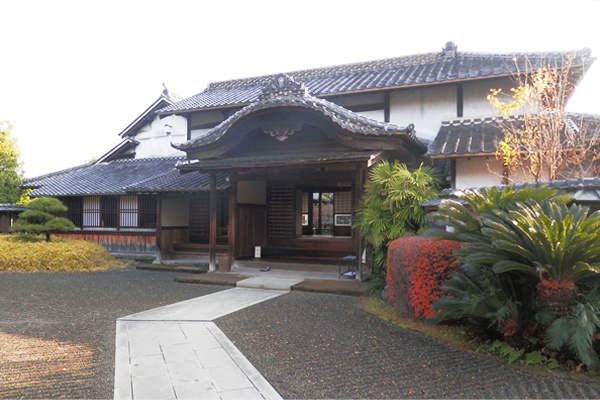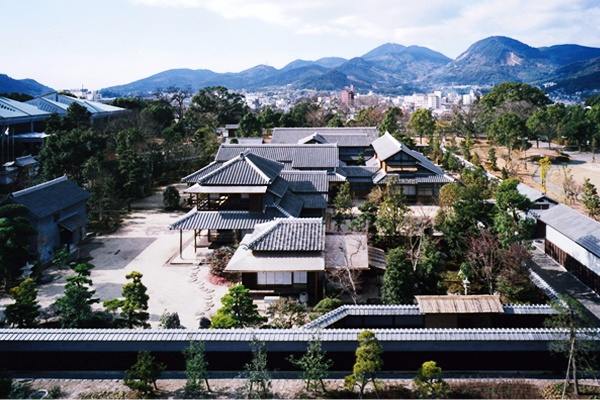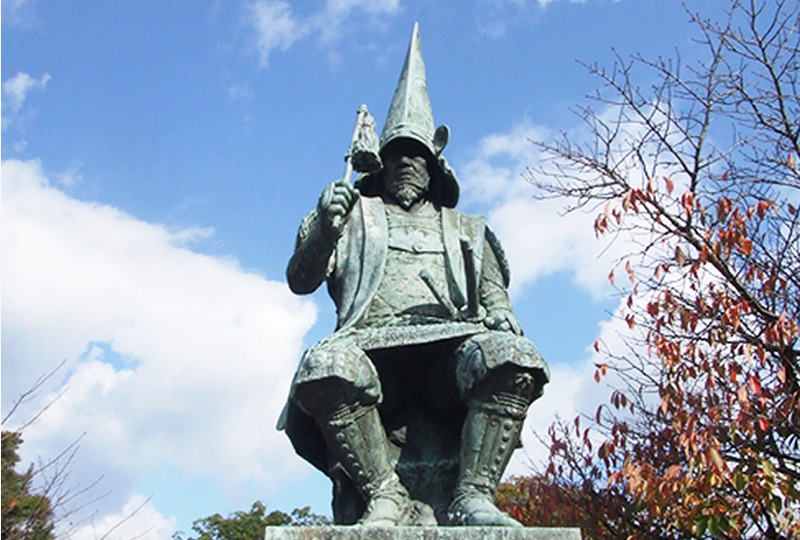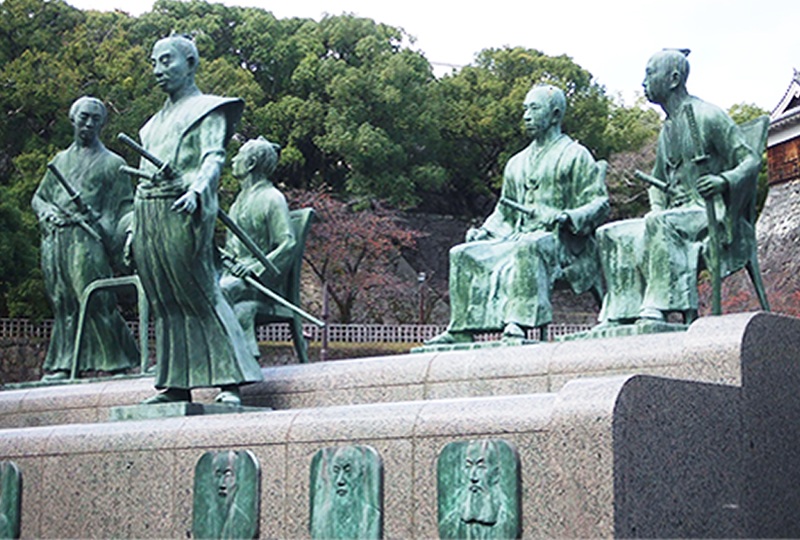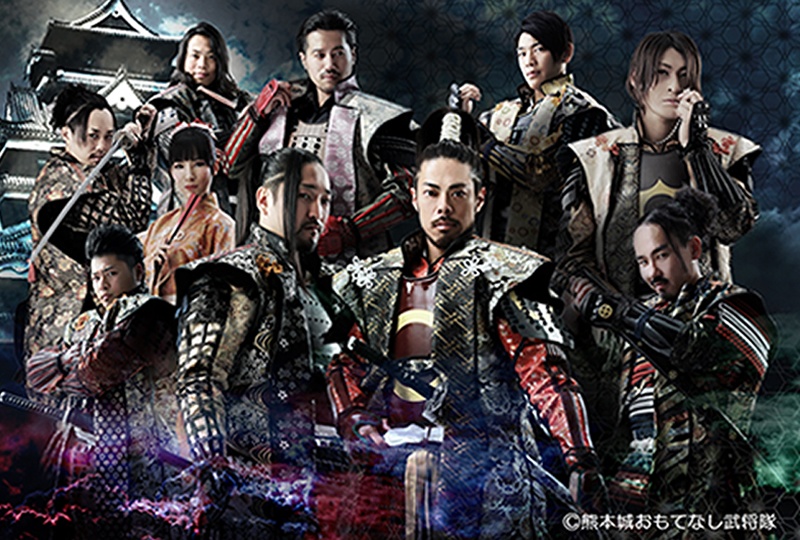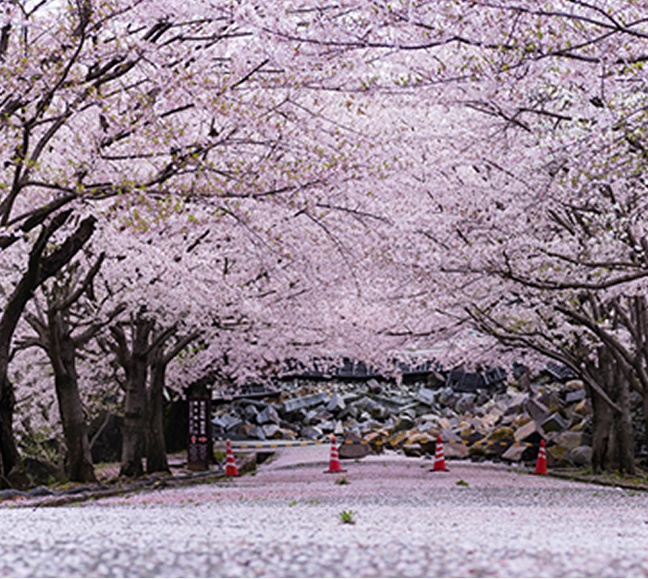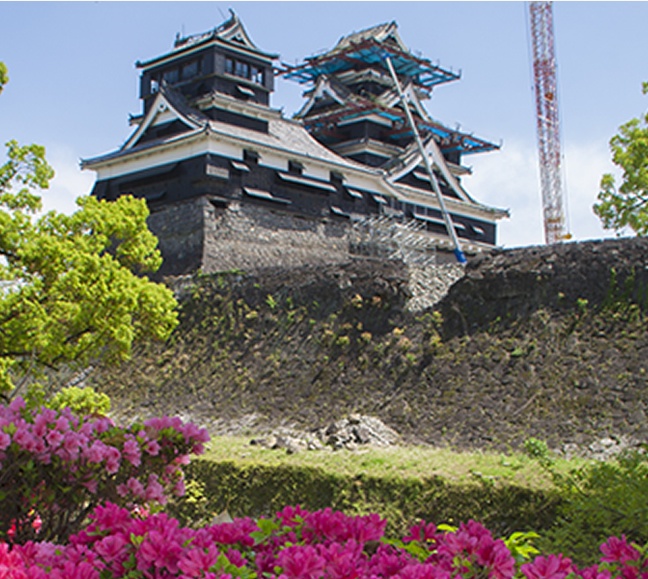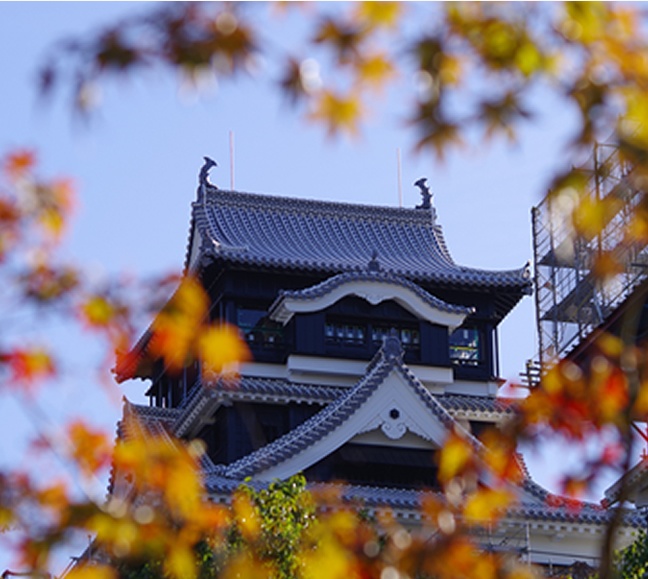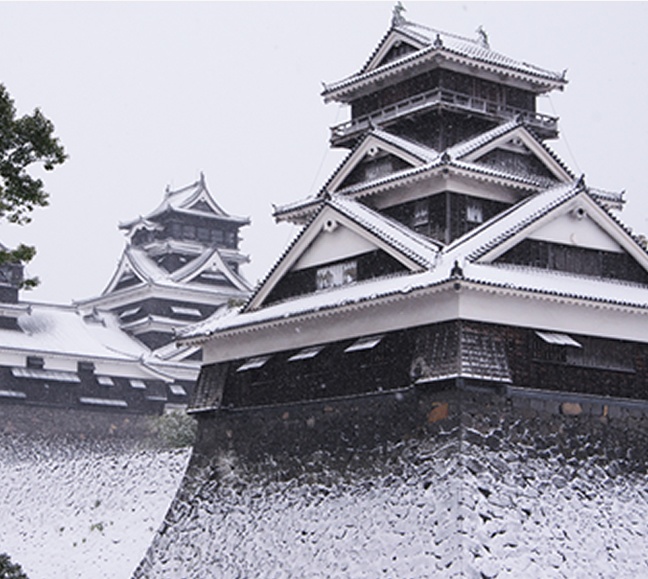About Kumamoto CastleAbout Kumamoto Castle
Castle Map

Castle Tower Zone
Kumamoto Castle is symbolised by the fact that it has both a Daitenshu (main castle tower) as well as a Shotenshu (small castle tower). The main castle tower that you see today is a reconstruction, which was first competed in 1960. The sight of the castle suspended upon its maginificent stone foundation is something to behold. The main castle appears to be made up of 3 levels, but there are actually 6 floors, as well as a basement floor. From the top of the castle, you can get a good view of Kumamoto city with the Aso mountain range visible in the distance.
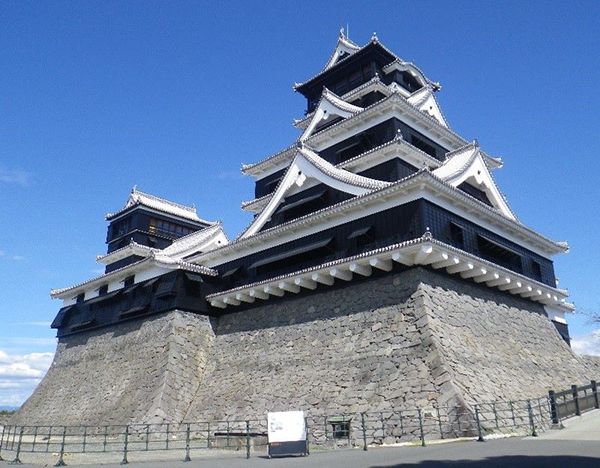
Tenshukaku (Main Castle Tower)
The main tower, or tenshukaku of Kumamoto Castle is characterised by its chidorihafu plover gable windows found on all four sides, as well as its north and south-facing decorative karahafu tang gables on the top floor. During the Edo period, various weapons were stored in the castle, so you can find several rooms still named for their former purposes, including the gun room, the armor room and the arrow room.
Above the stone wall of the small tower, there were iron spikes called shinobi-gaeshi, which were used to help keep out enemies, with various traps laid out in inconspicuous places. Searching for these is one of many ways to enjoy Kumamoto Castle.
In the 2016 Kumamoto Earthquake, tiles and the decorative shachihoko (a half-tiger half-fish roof ornament) fell from the top of the castle, and parts of the underlying stone wall crumbled.
Tenshukaku (Main Castle Tower) was prioritized as a symbol of earthquake recovery, and full restoration was completed in March 2021.
Honmaru-goten Palace Zone
Honmaru-goten Palace
※No Entry (Restoration Scheduled)
Based on illustrations, old pictures, writings and excavated items, the reconstructed Honmaru-goten Palace reflects the original architectural style of the time. The reconstruction was completed in time for the castle's 400th anniversary, with dazzling architecture that transports visitors back to days gone by. Extensive research on ancient achitecture and construction methods was conducted for the project, and locally sourced materials and local people were employed in the reconstruction as much as possible.
In the 2016 Kumamoto Earthquake, the floor of the most important room in the Palace, the Shokun-no-Ma sank, and the walls of every hall experienced breakages.
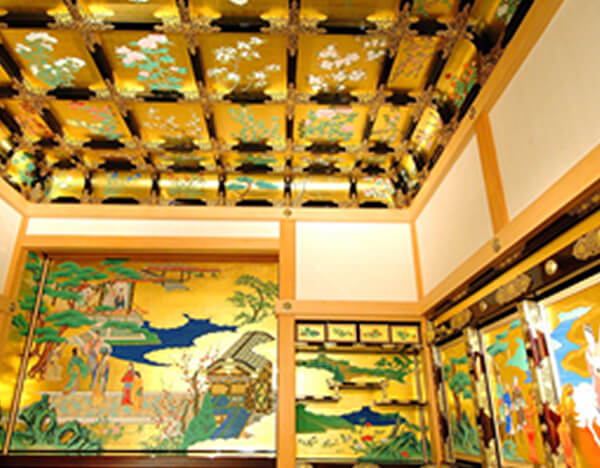
Honmaru-goten Ohiroma Great Hall 'Shokun-no-Ma'
※No Entry (Restoration Scheduled)
In the great hall of the palace, the Ohiroma, where the lively atmousphere of Daimyo culture lingers in the air, there is an even more important place called the Shokun-no-Ma. Within the Shokun-no-Ma with its hook-shaped platform, Kano artwork is displayed across the walls, including that depicting an event from the times of the Emperor Yuan of Han, involving the tragic heroin Wang Zhaojun (Oshokun in Japanese). If you look up at the celing, you will see plants painted there, depicting the four seasons.
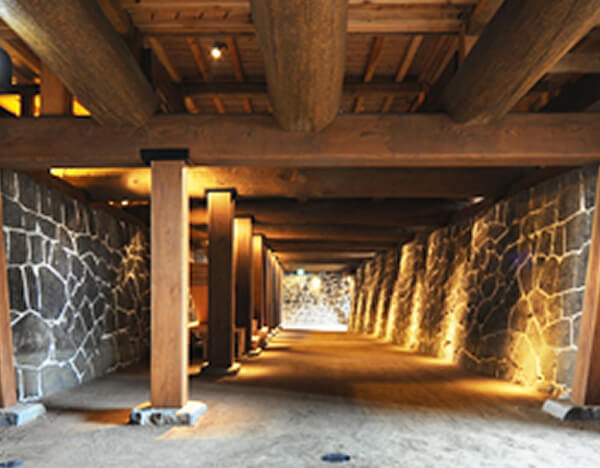
Kuragari-Tsuro (The Dark Passage)
Underneath the Honmaru-Goten, there is an underground stone passageway called Kuragari-Tsuro or 'Dark Passage'. This particilar feature is something of an architerctual anomily amongst Japanese castles, and the official entrance to the palace itself is underground. The passage is one of the castle's notable defence features.
Heizaemon-maru Zone
The west quarter of the Tenshukaku was once occupied by the chief vassal Kato Heizaemon, which is why the area is known as Heizaemon-maru. These quarters included the main tower, the small tower and the Uto-Yagura, or the Daisan-no-Tenshu, which is considered as being the third most important tower, and whose structure has remained since the Edo period. It is recognised as an Important Cultural Property of Japan.
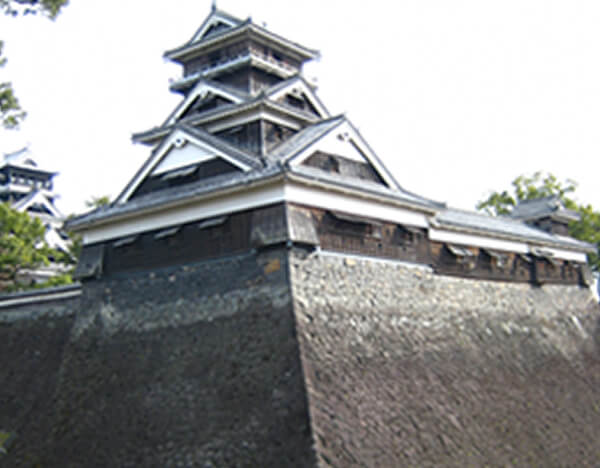
Uto-Yagura
※Demolition (Restoration Scheduled)
To the north-west of Honmaru, is Uto-Yagura, the only multicomplex tower remaining from the time of original construction. With 3 tiers, 5 storeys and one basement floor, the construction rivals even that of the main towers, so much so that it is even referred to as the Daisan-no-Tenshu, or the Third Tower. Up until the Meiji period there were in fact four 5-storey turrets, but now Uto-Yagura is the only one that remains. It is thought that the tower is named so becasue it was occupied by the vassals of feudal Lord Konishi Yukinaga (1555-1600), who owned Uto Castle, but this story cannot be confirmed.
In the 2016 Kumamoto Earthquake, the Tsuduki-Yagura to the south of the Uto-Yagura was damaged, collapsing in parts.
Sukiyamaru Hall Zone
Sukiyamaru is located in the southwest of the castle grounds. The Second Floor Large Hall used to be used for Noh performances, tea ceremonies and utakai (poetry readings), and was where guests to the castle were entertained.
In the 2016 Kumamoto Earthquake, the stone wall of the Sukiyamaru crumbled in places, and the construction became slanted.
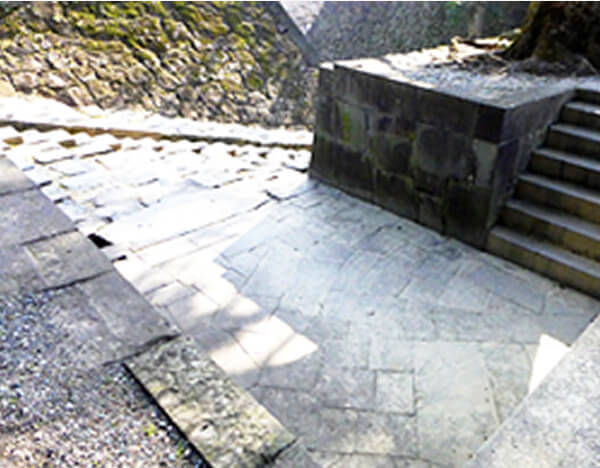
Chizuishi (Map Stones)
Chizuishi (Map Stones) is a semi-underground space in an area of Sukiyamaru, with a floor, sides and stairs made from flagstones. Made using ashlar, of all of the stone arrangements to be found at Kumamoto castle, these Map Stones are perhaps the most unique. The smooth stones which have been placed together with no gaps between them are said to look like a map, earning the area its name. A picture from around 1769 bears the words On-machiai iriguchi, (Waiting Room Entrance). In Japanese on-machiai is often used in the tea ceremony world, so this map stone area would have likely been the space where guests passed through to the waiting room, but on the way enjoying the interesting aesthetics of the map stones.
Iidamaru Zone
Iidamaru was an important area surrounded by walls and turrets, responsible for defending the south side of the main Honmaru palace. The grounds included a kitchen with a well and a gun storage area.
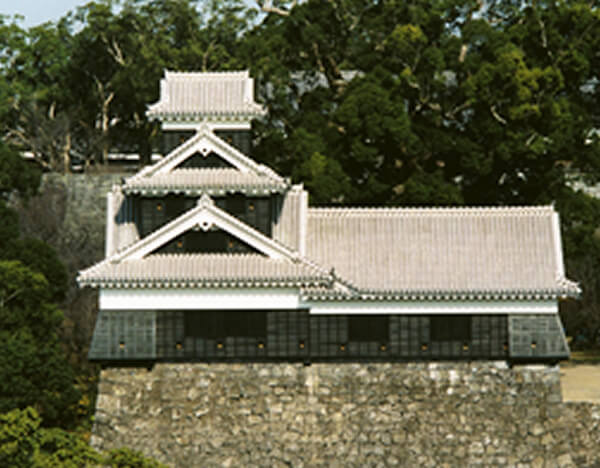
Iidamaru Gokai-Yagura
※Restoration in Progress
Another interesting point about the Honmaru is that because it is built independent from the rest of the structure, it looks like a small castle. Important duties at Iidamaru were carried out at the Iidamaru Gokai-Yagura in the southwest corner. In 2005 the wooden tower here was reconstructed.
In the 2016 Kumamoto Earthquake, a significant area of the stone wall that holds up the
structure crumbled, but the cornerstones survived, and prevented the structure from
toppling. These cornerstones earned the nickname kiseki no ippon ishigaki, which means 'miracle stone pillars' and the restoration of the stone
wall was completed in 2024.
Higashi Takenomaru Zone
Higashi-Takenomaru was where Kumamoto Castle defended itself from attacks from the east side. At Higashi-Takenomaru, a number of yagura (turrets) are lined up - Tago-Yagura, Shichiken-Yagura, Juyonken-Yagura, Yonken-Yagura, Gennoshin-Yagura, Higashi-Juhachiken-Yagura, Kita-Juhachiken-Yagura, Goken-Yagura, as well as Akazu-no-mon Gate and Hira-Yagura. All of these are considered as being National Important Cultural Properties of Japan.
Seeing these turrets perched upon the high castles walls will certainly make you feel as though you been transported back to ancient Kumamoto.
In the 2016 Kumamoto Earthquake, Higashi-Juhachiken-Yagura, Kita-Juhachiken-Yagura, Goken-Yagura and Akazu-no-mon gate were damaged, becoming cracked. Other Yagura experienced wall breakages and became slanted.
※Underlined: Demolition (Restoration Scheduled)
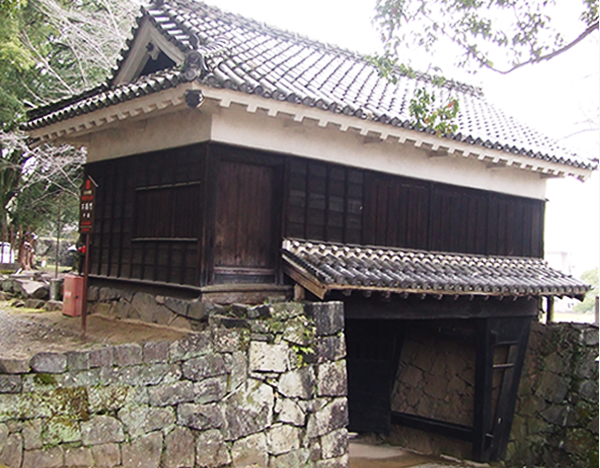
Akazu-no-mon Gate
※Demolition (Restoration Scheduled)
Akazu-no-mon Gate is the only remaining tower gate left at Kumamoto Castle grounds, and is recognised as a National Important Cultural Property. In Japanese culture, the northeast gate is considered unlucky, and called Kimon, which literally means 'demon's gate'. The gate was not usually opened for this reason, garnering it the name 'Akazu-no-mon' which roughly translates as 'the gate that should not be opened'.
In the 2016 Kumamoto Earthquake, some of the stone wall crumbled away, and the turret above the gate collapsed.
Takenomaru Zone
Higo Meika-en Garden
※No Entry (Restoration Scheduled)
Takenomaru was the southern defence area of Kumamoto Castle. The Nagabei Long Wall here that stretches along the Tsuboi River is recognised as a National Important Cultural Property. Inside Takenomaru, you can find the Higo Meika-en Garden, which, prior to the 2016 earthquake, served as a place where local residents could go to relax and refresh. Higo Meika-en Garden was originally created by the head of the Hosokawa family, who suggested horticulture as a way for retainers to mentally unwind. Known as Higo Rokka, there are 6 flowers to be found in the garden. These are, Higo camellia, Higo sasanqua, Higo iris, Higo morning glory, Higo chrysanthemum and Higo peony.
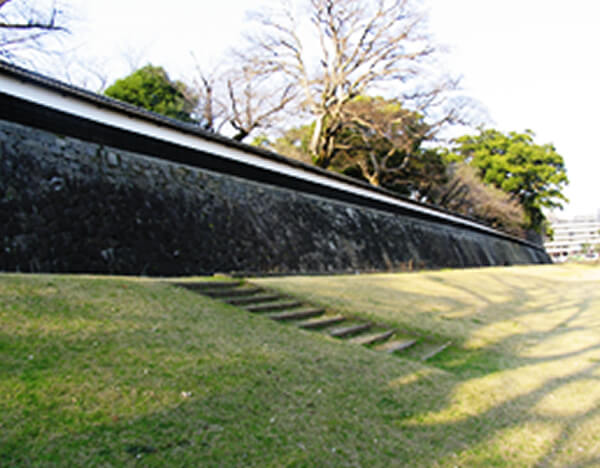
Nagabe Long Wall
Nagabei Long Wall, which runs along the banks of the Tsuboi River in a straight 242m line, is recognised as an Important Cultural Property. Drawings from the Edo Period show us that there used to be ten ishiotoshi (Bretèche) on the wall. During the Satsuma Rebellion of 1877, these were removed, and then later on reconstructed.
During the 2016 Kumamoto Earthquake, an 80m length of the eastern part of the wall collapsed, but restoration was completed in 2021.
Nishidemaru / Bugyomaru (Magistrates Office) Zone
Lying to the west of Honmaru, Nishidemaru is the defence point from which attacks and counter attacks were made, and there are three otemon (main gates) that allow entry to the castle situated to the North, West and South of Nishidemaru. Of these, the West gate, Nishi-otemon, Gate is considered the official entrance to the castle.
During the Edo period, Bugyomaru was home to the Magistrates Office, making it the political center of Kumamoto. In the northwest and southwest corners of Nishidemaru, you can find the reconstructed turrets, Inui-Yagura and Hitsujisaru-Yagura. From the grounds of Kato Shrine, the view of the castle grounds and the Uto-Yagura are a sight to behold.
In the 2016 Kumamoto Earthquake, the west side and southeast corner of Bugyomaru's stone wall were damaged, collapsing in parts.
※Underlined: Demolition (Restoration Scheduled)
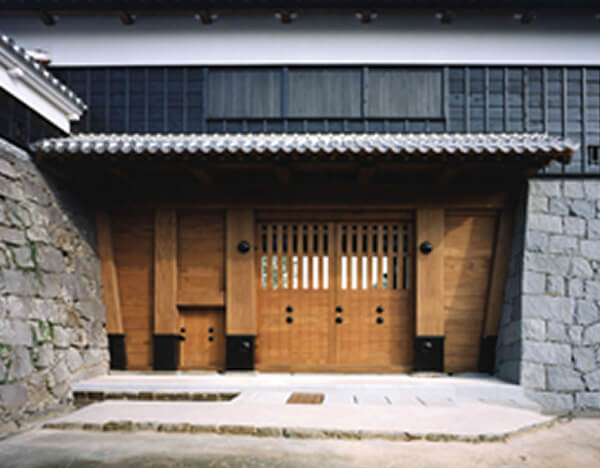
Nishi-otemon Gate
※Demolition (Restoration Scheduled)
Of the three gates at Kumamoto Castle, the west gate, Nishi-otemon, is considered the official entrance to the grounds. It is said that in 1632, upon recieving Higo (Kumamoto), the Daimyo Hosokawa Tadatoshi (1586-1641) departed from his vehicle to bow deeply before the gate, in appreciation of the 54 Mangoku (a measure of one's rice harvest) he had recieved.
In 2004, Nishi-otemon Gate was reconstructed, but in the 2016 Kumamoto Earthquake the founding stones collapsed and the turret was damaged, becoming slanted.
Ninomaru Zone
During the Edo period, Ninomaru Park was the grounds for residences belonging to high ranking retainers, as well as the location of the Han (doman) school, Jishukan. From the park, you can enjoy a great view of Tenshukaku main tower and Uto-Yagura.
※Underlined: Demolition (Restoration Scheduled)
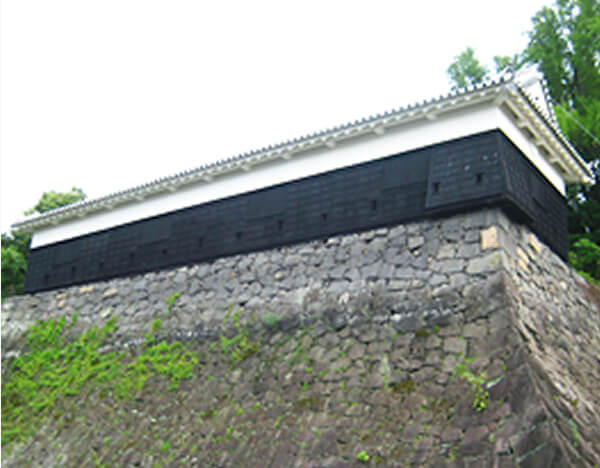
Kenmotsu-Yagura (Watchtower)
Together with the northerly castle entrance, Shinbori-Yagura, Kenmotsu-Yagura was the watchtower that controlled who could pass along the highway. This turret has become an Important National Cultural Property.
In the 2016 Kumamoto Earthquake, the interior and exterior walls suffered from damage, but restoration was completed in 2023.
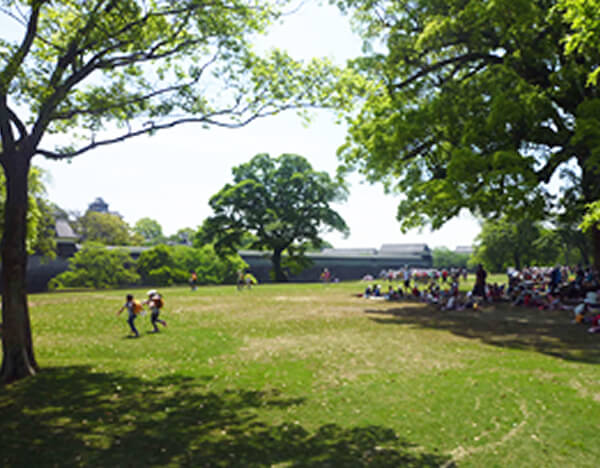
Ninomaru Park
Situated to the west of Kumamoto Castle Honmaru, Ninomaru (the second tower) was the living quarters for high ranking retainers throughout the Edo period.
In 1754, Shigetaka Hosokawa, the 6th daimyo of Kumamoto's Hosokawa clan, established the Jishukan Han (domain) school. The school permitted entry not only to those who were in the clan, but to ordinary citizens who demonstrated ability. Jishukan has produced many great scholars, such as the thinker Yokoi Shonan, Motoda Nagazane, who served as tutor for the Emperor Meiji, and Kowashi Inoue, who drafted up the Meiji Constitution, amongst others.
Sannomaru Zone
Kyu Hosokawa Gyobutei
※Restoration in Progress
Kyu Hosokawa Gyobutei (Former Residence of Hosokawa Gyobu) was a branch residence of the Hosokawa Clan, owned by the Hosokawa Gyobu family, that was originally in the Kokai district, to the east of Kumamoto castle. In 1993, Kumamoto city had the residence disassembled and rebuilt within the castle grounds. It is recognised by the prefecture as an important cultural property, and is considered one of the country's most distinguished samurai residences.
In the 2016 Kumamoto Earthquake, a large portion of the wall that surrounds the residence collapsed, and the walls in the drawing room and tea room were damaged. Pillars were left slanted and there was also damage to multiple fixtures and fittings.
Other Spots
Not just within the grounds of Kumamoto castle, but around it too, there are all kinds of things to discover which relate to Kumamoto castle and Kumamoto's history. Why not take a stroll around the castle's lush green outskirts to see what you can find?
The Four Seasons at Kumamoto Castle
- HOME
- About Kumamoto Castle





